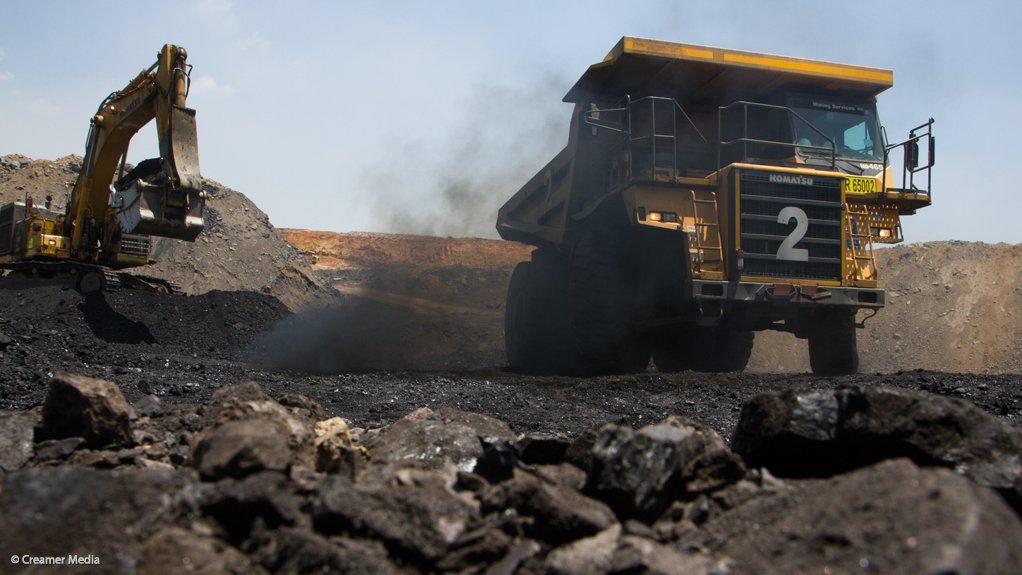TORONTO (miningweekly.com) – Canadian diversified miner Teck Resources surprised markets on Thursday with better-than-expected fourth-quarter earnings, beating analyst expectations by C$0.03 a share.
However, the Vancouver-based miner reported a net loss of C$459-million in the three months ended December, as it booked after-tax impairment charges of C$536-million, bringing total write-downs for 2015 to C$2.9-billion.
Triggered by lower short-term commodity prices and lower market expectations for some future prices and capital market conditions, Teck impaired C$598-million on its 20% interest in the Fort Hills oil sands project – currently halfway through construction in Alberta – as well as C$93-million on copper and C$45-million on its steelmaking coal assets.
The adjusted profit of C$16-million, or C$0.03 a share, did little to excite investors as the company’s TSX-listed stock on Thursday morning fell 8.5% to a one-year low of C$4.98 apiece.
"… the commodity cycle continues to provide us with a very challenging environment – such that our near-term priorities are to keep all of our operations cash-flow positive, meet our commitment to Fort Hills with internal sources of funds, evaluate options to further strengthen our liquidity and maintain a strong financial position by ending the year without drawing on our lines of credit,” said president and CEO Don Lindsay.
Teck still had a remaining cash funding commitment to complete the Fort Hills project of C$1.2-billion, which at current low prices of below $27/bl, would make the project unprofitable.
It had become increasingly difficult for the debt-laden company to obtain more debt in the current market environment, but during the quarter it raised nearly C$1-billion through two streaming transactions to strengthen its balance sheet.
Lindsay said the company was “evaluating options” to further strengthen the company’s liquidity position. As on Wednesday it had a cash balance of C$1.8-billion, and $3-billion available under its revolving credit facility that matures in 2020.
Teck’s financial results were significantly affected by the decline in commodity prices. In the case of steelmaking coal, prices were about 40% lower in US dollar terms in the December quarter than those experienced during the financial crisis in 2008/2009. In 2015, yearly copper, steelmaking coal and zinc prices declined by 20%, 19% and 11%, respectively, in US dollar terms, compared with 2014.
Zinc prices fell 28% to a low of $0.67/lb in the quarter, the lowest level since 2009.
Concerns regarding a slowdown in the Chinese economy combined with an oversupply of certain commodities, especially steelmaking coal, had caused the price declines and volatility, Teck stated.
Partly offsetting the commodity price declines was a stronger US dollar, which had a significant positive benefit on the company’s business, as sales of its products were denominated in US dollars, while a significant portion of its expenses were incurred in local currencies, particularly the Canadian dollar. At current commodity prices, each one cent change in the Canadian/US dollar exchange rate had a C$34-million effect on its earnings before interest, taxes, depreciation and amortisation.
Teck, which had total debt on its books of $7-billion, said that its debt interest expense increased owing to the effect of the stronger US dollar, as all its debt and related interest expenses were US dollar denominated. Finance expense was C$80-million in the fourth quarter, flat from a year earlier.
CAUTIOUS OUTLOOK
The average realised steelmaking coal price of $81/t was 26% lower than the fourth quarter of 2014, reflecting oversupplied steelmaking coal market conditions and a decline in spot price assessments.
Coal output of 6.4-million tonnes was 6% lower than the same period a year ago as Teck reduced production volumes to match sales volumes, which were equal to the previous year. Steelmaking coal output in 2016 was expected to be between 25-million and 26-million tonnes.
Copper output during the period increased to 96 000 t, compared with 83 000 t a year earlier. The company said operational issues and low copper prices were affecting current and future mine production plans. Estimates of lost global output in 2015 amounted to more than 1.2-million tonnes.
Teck said that, despite a reduction in demand growth in 2015, analysts believed the market recorded only a small surplus. Similar levels of production cuts had already been made for 2016 and, while mine output was expected to grow in 2016, analysts now expected it would be far less than previously forecast. However, market fundamentals over the medium to long term remained positive, as low prices, lower grades, and ongoing operational difficulties and project delays, continued to constrain production growth and investment.
Teck expected 2016 copper output to range between 305 000 t to 320 000 t, with lower output in the second half of the year as a result of lower grades at Highland Valley, in British Columbia.
Demand for refined zinc in Teck’s key North American markets remained weak during the fourth quarter, with the company’s customers facing headwinds from significantly increased imports of low-priced galvanised steel into North America. Teck expected zinc metal supply to become constrained in 2016, with the forecast mine closures having now taken place and further production cuts announced in the third and fourth quarters also taking effect.
Edited by: Samantha Herbst
Creamer Media Deputy Editor
EMAIL THIS ARTICLE SAVE THIS ARTICLE
To subscribe email subscriptions@creamermedia.co.za or click here
To advertise email advertising@creamermedia.co.za or click here













